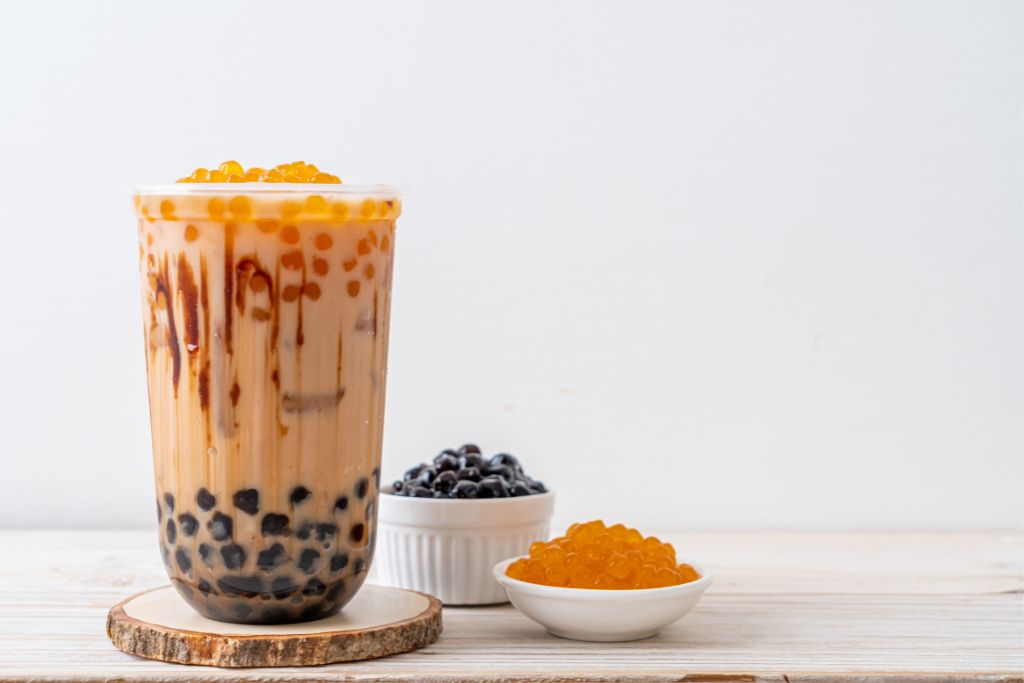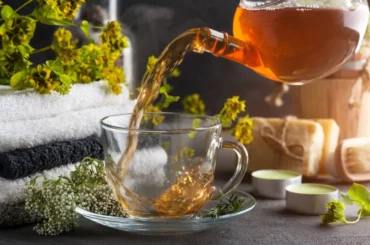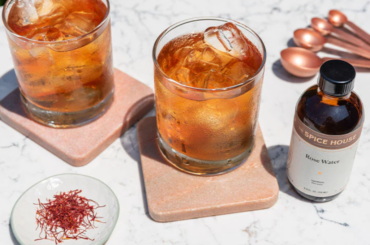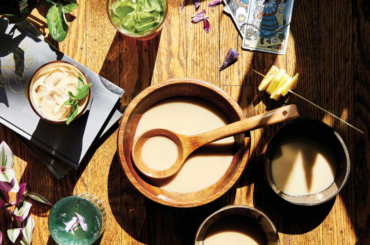If you’re the type of person who finds immense joy in preparing your food and drinks at home, then you’re probably wondering how to make your own boba pearls at home. Tapioca pearls gained popularity as one of the best sinkers for milk tea.
Sinkers are also known as “QQ”, which translates to “chewy” in Taiwan. “QQ” is associated with the bounciness of food items in Taiwan, such as fishballs, rice balls, and some noodles. With the increasing popularity of milk teas, it has become widely associated with sinkers or boba pearls.
While there are tons of different sinkers you can use for your milk tea, the tapioca pearl recipe is the one most preferred by many. These sweet and chewy treats come in many different sizes, textures, colors, and even flavors.
In this article, we’ll teach you how to cook boba pearls and offer you tips on how to prepare tapioca pearls for your next milk tea masterpiece.
What Are Tapioca Pearls?
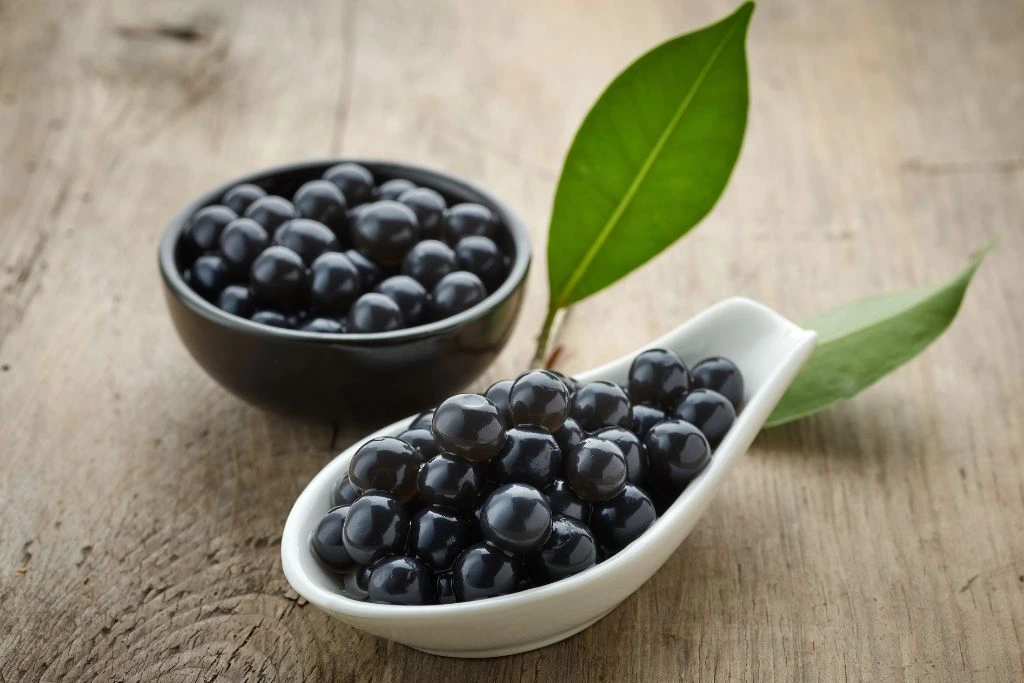
Tapioca pearls or boba pearls are round edible spheres made from tapioca, a cassava root starch. They have become a popular alternative to sago, a cooking staple in Southeast Asia. These balls vary in size, but they generally have a diameter of about five to ten millimeters. Since it’s generally tasteless, some customize the pearls by adding different flavors.
These tapioca pearls are often used as an additive in many desserts. However, they have gained popularity with the milk tea craze. When added to milk tea, tapioca pearls are often referred to as simply pearls or boba. Its addition to milk tea adds a different texture to the drink with its chewiness.
Best Milk Teas To Add Tapioca Pearls
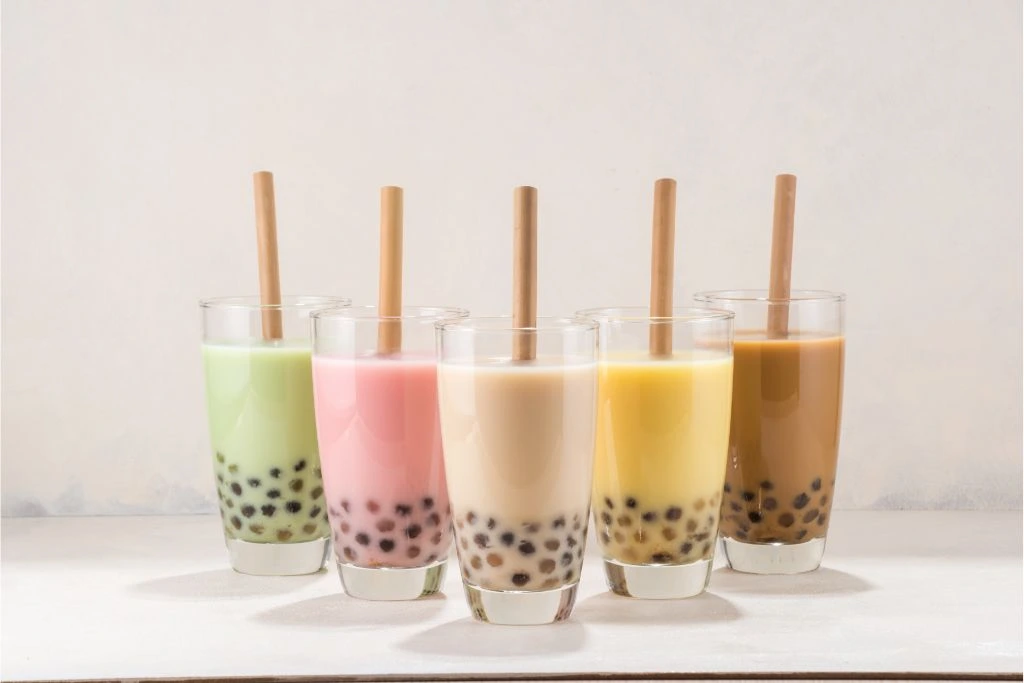
You might be wondering what the best milk tea flavors that would complement the chewy goodness of tapioca pearls are. Well, you don’t have to wait any further, as we give you the top three milk tea flavors that go well with tapioca pearls.
Mango Milk Tea
Mango milk tea is famous for its tropical flavor. While ripe mango has its own sweetness, it still has sourness that perfectly complements the sweet and chewy characteristics of a tapioca pearl. When preparing the mango boba pearl, you can use fresh fruits and puree it on your own. However, you can also use store-bought mango puree if you don’t have time.
When you use mango puree from the supermarket, take note that it’s probably sweeter than fresh ones as they usually add artificial sweeteners to it.
You can check out our Mango Milk Tea recipe here.
Taro Milk Tea
Taro milk tea’s taste is highly similar to vanilla. When you use full-cream milk, you’ll get a rich and creamy drink. This creamy quality blends well with the sweetness of boba pearls. When preparing your taro milk, it’s best to use ice cubes rather than crushed ice for a more refreshing take.
Here’s our recipe for this wonderful drink.
Chai Milk Tea
Add tapioca pearls to take your iced chai latte up a notch. Chai tea is excellent for giving you that boost of energy with its caffeine level. But the sweetness offered by the pearls makes it an enjoyable drink you can share with your family.
If preparing this caffeine-filled drink, blend it with your choice of milk or creamer for that creamy goodness.
Tapioca Pearls Ingredients
The best thing about making tapioca pearls from scratch is you get the freedom of customizing their size and flavor based on your preference.
Now that you have a fairly good overview of tapioca pearls, are you ready to cook tapioca pearls in your kitchen?
Cooking tapioca pearls involve only two main ingredients. You will have additional ingredients if you prefer to have new flavors you want to your tapioca pearls.
Follow these steps for making your homemade tapioca pearls:
Note: This recipe is good for two people.
Tapioca starch (100 grams): This flour comes from the starch from the cassava root. It’s important not to confuse it with cassava flour because it’s often in powdered form.
Water (80 ml): The water is necessary to make the starch stick together to develop the dough. However, it should be boiling hot. Otherwise, it’d be harder to dissolve the starch and form it into balls.
Dark brown sugar (50 g) (optional): Adding sugar is optional. Only use it if you want to achieve a darker shade. Take note that you’re unlikely to get the black color with sugar alone. The black color can best be achieved with food coloring.
How to Make Homemade Tapioca Pearls
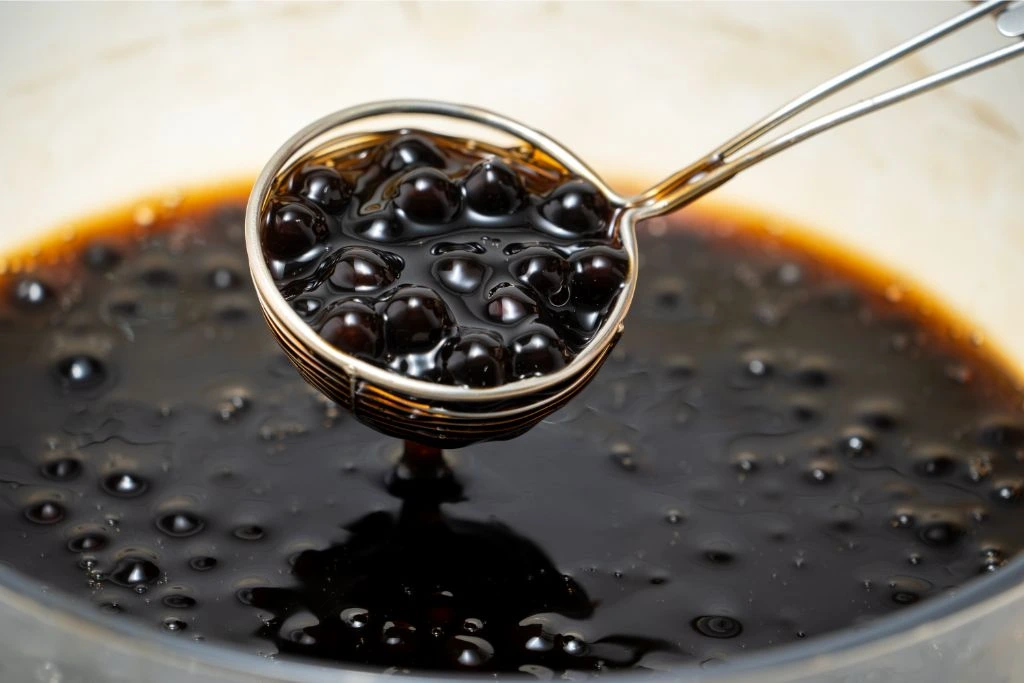
This step-by-step guide will teach you how to boil tapioca pearls.
Step 1: Prepare the ingredients.
Place the tapioca starch in a clean bowl. If you plan to achieve the black color that tapioca pearls are known for, you’d have to prepare it in a separate bowl.
Step 2: Boil a pot of water.
In high heat, start by boiling 60 ml of the water. Don’t add the tapioca pearls yet. If you plan to add brown sugar to your mix, you’d want to add about 30 g while you’re boiling the water. Once the sugar is reduced to syrup and bubbling, turn the heat off.
Step 3: Add the tapioca starch.
Add the tapioca starch in parts. Add half of the mixture first, and stir to allow the mixture to incorporate well. Gradually add the remaining tapioca starch while it’s still hot. Make sure to mix them well together. By this time, you’d notice that the dough is starting to get sticky.
Step 4: Cool the mixture.
Before proceeding to the next step, allow the mixture to cool down first. Set it aside and prepare your counter for kneading.
Step 5: Knead the dough.
Once the mixture is cool to the touch, take a handful and knead it on a flat surface. Sprinkle some of the remaining flour and start rolling out the mixture. To make it easier for you to shape, flatten them to about 1 to 1.5 cm thick.
Step 6: Start shaping the tapioca pearls.
When you have flattened the dough, use a knife to cut them into squares of 1.5 cm x 1.5 cm. Roll them in your hand until you shape them into your desired size. Once you’ve shaped them, cover them with dry starch, so they don’t stick when placed together.
How To Cook Homemade Tapioca Pearls
Now that you’ve successfully made the tapioca pearls, you’d still have to cook them before you can use them for your milk tea.
Here’s how you cook homemade tapioca pearls for your milk tea.
- In high heat, place a pan and allow it to boil.
- When the water is on a rolling boil, add the dry tapioca balls.
- Allow it to cook for about eight minutes on medium-high heat.
- Carefully stir the balls, so they don’t stick to the pan.
- Cover the pan, adjust to low heat, and cook for another 10 minutes.
- When the balls start to float, remove the pan from the burner.
- Drain the boiling water and run it over cold water.
- Alternatively, you can give the pearls an ice bath. This process will help the tapioca balls to preserve their chewy texture. Cold water also helps in removing the presence of starch on the surface, resulting in an improved texture. It also prevents the balls from sticking together.
Take note that the cooked tapioca pearls will only have the initial sweetness from the sugar you added when making the balls. You’re free to adjust the sweetness level of your pearls as you please. Some will choose to mix the cooked tapioca pearls with sugar syrup to make them sweeter, especially if they didn’t add sugar initially.
FAQs
Can you make tapioca pearls with regular flour?
Tapioca pearls won’t be the same if you use regular flour. Ideally, you should only use pure tapioca flour or starch because of its texture. Substituting it with other flours will change the texture and appearance.
If you want to use all-purpose flour, the ratio will differ. The same with the cooking time.
How long does it take to cook tapioca pearls?
Cooking homemade tapioca pearls only takes about 20 minutes at most. However, it might take longer if you’re preparing the tapioca pearls from scratch. For our recipe above, it will take you roughly half an hour to complete.
How long do homemade boba pearls last?
It depends. If you’re pertaining to the dry tapioca pearls, they can last from six to 12 months if kept in a sealed bag in a cool and dry area. Don’t refrigerate or freeze them.
For cooked pearls, the shelf life is shorter. When kept at room temperature, they will only last for four hours. If you refrigerate them, they can last for up to three days. Take note, however, the texture won’t be the same. They will lose their chewy texture and will be mushy.
Can I eat tapioca starch?
If you’re looking for other uses of tapioca starch aside from the well-known tapioca pearls, then you’re in luck. Tapioca starch is an excellent staple if you’re sticking to a paleo diet since it’s gluten and grain-free.
While you can’t really substitute cornstarch for tapioca pearls, you can use tapioca starch as a substitute for cornstarch. It will greatly improve the texture of baked goods.

